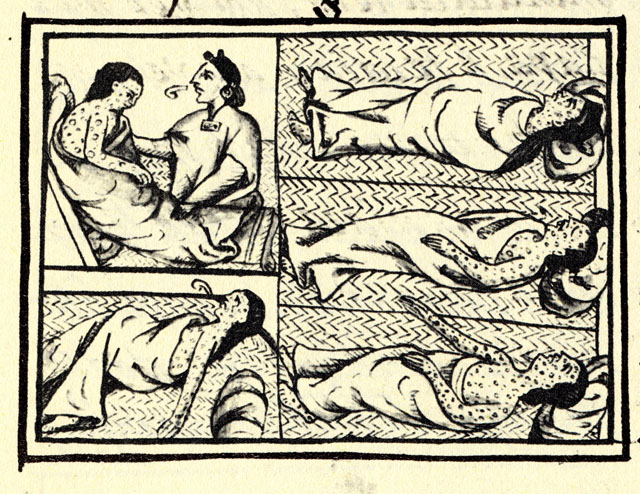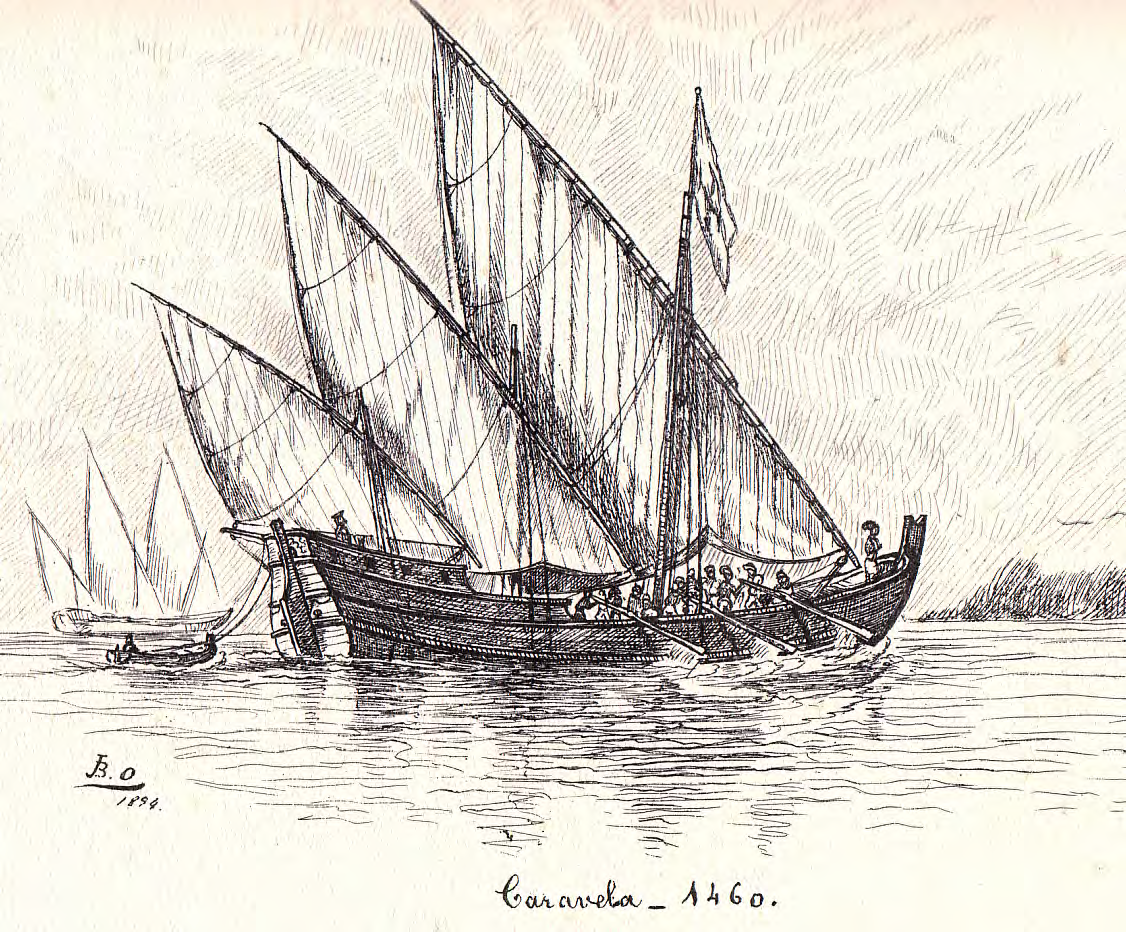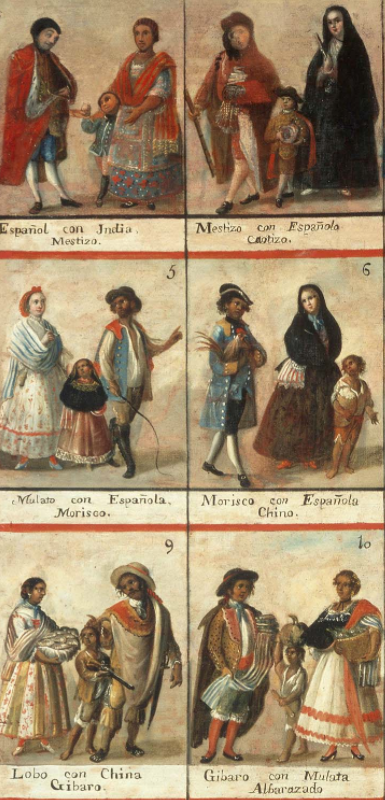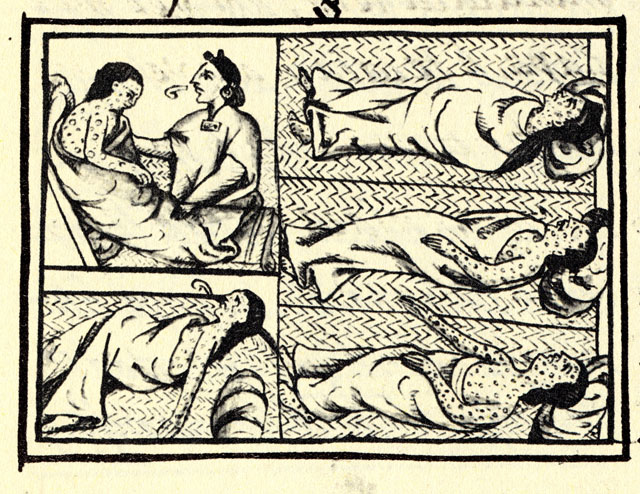The Columbian Exchange, Spanish exploration, and Conquest flashcards
5.0(1)
5.0(1)
Card Sorting
1/20
Earn XP
Description and Tags
Study Analytics
Name | Mastery | Learn | Test | Matching | Spaced |
|---|
No study sessions yet.
21 Terms
1
New cards
What was important about the development of vessels such as the one depicted above?
They allowed Portuguese and Spanish navigators to sail across oceans rather than only along the coast
2
New cards
This painting could best be used as evidence of which of the following historical developments?
how Spanish colonization led to a racial hierarchy in the New World based on an individual's percentage of Spanish blood
3
New cards
Read the passage below and answer the question.
"Colón [Columbus] and his crew did not voyage alone. They were accompanied by a menagerie of insects, plants, mammals, and microorganisms . . . European expeditions brought cattle, sheep, and horses, along with crops like sugarcane (originally from New Guinea), wheat (from the Middle East), bananas (from Africa), and coffee (also from Africa) . . . "
-From Charles C. Mann, historian, 1493: Uncovering the New World Columbus Created, 2011.
Which of the following processes is Mann describing?
"Colón [Columbus] and his crew did not voyage alone. They were accompanied by a menagerie of insects, plants, mammals, and microorganisms . . . European expeditions brought cattle, sheep, and horses, along with crops like sugarcane (originally from New Guinea), wheat (from the Middle East), bananas (from Africa), and coffee (also from Africa) . . . "
-From Charles C. Mann, historian, 1493: Uncovering the New World Columbus Created, 2011.
Which of the following processes is Mann describing?
The Columbian Exchange
4
New cards
Read the excerpt and answer the question below.
It is public opinion and knowledge that no end of deception is practiced and a thousand acts of robbery and violence are committed in the course of bartering and carrying off Negroes from their country and bringing them to the Indies and to Spain. . . . Since the Portuguese and Spaniards pay so much for a Negro, they go out to hunt one another without the pretext of a war, as if they were deer; even the very Ethiopians, who are different, being induced to do so by the profit derived. . . . They embark four and five hundred of them in a boat which, sometimes, is not a cargo boat. The very stench is enough to kill most of them, and, indeed, very many die. The wonder is that twenty percent of them are not lost.
-Source: Fray Tomas de Mercado, Spanish Dominican Friar, 1587
The excerpt is best understood as a response to which of the following historical developments?
It is public opinion and knowledge that no end of deception is practiced and a thousand acts of robbery and violence are committed in the course of bartering and carrying off Negroes from their country and bringing them to the Indies and to Spain. . . . Since the Portuguese and Spaniards pay so much for a Negro, they go out to hunt one another without the pretext of a war, as if they were deer; even the very Ethiopians, who are different, being induced to do so by the profit derived. . . . They embark four and five hundred of them in a boat which, sometimes, is not a cargo boat. The very stench is enough to kill most of them, and, indeed, very many die. The wonder is that twenty percent of them are not lost.
-Source: Fray Tomas de Mercado, Spanish Dominican Friar, 1587
The excerpt is best understood as a response to which of the following historical developments?
the Atlantic slave trade
5
New cards
In addition to the effect depicted in the image, which of the following was another negative environmental impact of Spanish colonization in the Americas?
The introduction of new animals negatively affected Native American crops

6
New cards
How did New World colonization, enabled by the vessel above, affect the economy of Europe?
It brought a great deal of gold and silver into Europe, stimulating the banking industry and promoting Europe’s transition to capitalism

7
New cards
Read the excerpt and answer the question below.
"Into this land of meek outcasts there came some Spaniards who immediately behaved like ravening wild beasts . . . killing, terrorizing, afflicting, torturing, and destroying the native peoples, doing all this with the strangest and most varied new methods of cruelty, never seen or heard of before, and to such a degree that this Island of Hispaniola once so populous (having a population that I estimated to be more than three million), has now a population of barely two hundred persons.”
-Source: Bartolomé de Las Casas, Brief Account of the Devastation of the Indies, 1542.
Which of the following historical figures most likely would agree with de Las Casas’s account of Spanish colonization?
"Into this land of meek outcasts there came some Spaniards who immediately behaved like ravening wild beasts . . . killing, terrorizing, afflicting, torturing, and destroying the native peoples, doing all this with the strangest and most varied new methods of cruelty, never seen or heard of before, and to such a degree that this Island of Hispaniola once so populous (having a population that I estimated to be more than three million), has now a population of barely two hundred persons.”
-Source: Bartolomé de Las Casas, Brief Account of the Devastation of the Indies, 1542.
Which of the following historical figures most likely would agree with de Las Casas’s account of Spanish colonization?
Moctezuma II
8
New cards
Read the passage below and answer the question.
"Colón [Columbus] and his crew did not voyage alone. They were accompanied by a menagerie of insects, plants, mammals, and microorganisms . . . European expeditions brought cattle, sheep, and horses, along with crops like sugarcane (originally from New Guinea), wheat (from the Middle East), bananas (from Africa), and coffee (also from Africa) . . . "
-From Charles C. Mann, historian, 1493: Uncovering the New World Columbus Created, 2011.
Mann describes several commodities that were taken from Europe and Africa to the Americas. Which of the following were taken from the Americas to Europe?
"Colón [Columbus] and his crew did not voyage alone. They were accompanied by a menagerie of insects, plants, mammals, and microorganisms . . . European expeditions brought cattle, sheep, and horses, along with crops like sugarcane (originally from New Guinea), wheat (from the Middle East), bananas (from Africa), and coffee (also from Africa) . . . "
-From Charles C. Mann, historian, 1493: Uncovering the New World Columbus Created, 2011.
Mann describes several commodities that were taken from Europe and Africa to the Americas. Which of the following were taken from the Americas to Europe?
Gold and silver
9
New cards
The image most directly reflects which of the following during the Spanish colonial era?
the development of a race-based caste system

10
New cards
These three crops mutually supported each other's growth, a system that spread from present-day Mexico northward into the present-day American Southwest.
True
11
New cards
The image most closely reflects which of the following demographic changes in the Spanish colonies?
a decrease in Native Americans as smallpox spread, but an increase in Spaniards as they continued to colonize

12
New cards
The market success of plantation cash crops such as sugar, tobacco, rice, indigo, and cotton greatly increased ___________
labor demands and solidified economic reliance on slavery.
13
New cards
Which of the following contributed most to the increasing use of African slave labor instead of Native American labor in colonial Spain?
Enslaved Africans were immune to most diseases spread by the Spanish, while indigenous people were not.
14
New cards
Which of the following conclusion might historians make about the Mississippian people from the evidence of Cahokia?
They lived in settled villages and farmed, allowing for the growth of large populations.
15
New cards
The excerpt was most likely intended to increase public support for which of the following?
European conquest in the Americas
16
New cards
the enslaved African population increased to serve as a labor force for the Spanish
17
New cards
Which of the following contributed most directly to the enactment of the law in the excerpt?
European demands for laborers in the New World
18
New cards
Which of the following pieces of evidence would best support Landon’s argument in the excerpt?
archaeological remains of ancient seeds
19
New cards
Which of the following developments from the late 1400s emerged from ideas most similar to those expressed in the excerpt?
the Reconquista, when Spanish Christians expelled Muslims from the Iberian Peninsula
20
New cards
The arid Great Basin limited farming opportunities close to major waterways, making permanent settlements undesirable.
These three crops mutually supported each other's growth, a system that spread from present-day Mexico northward into the present-day American Southwest.
21
New cards